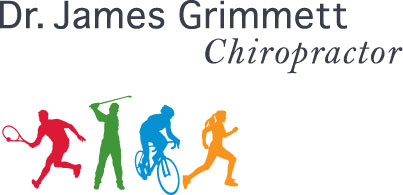Temporomandibular disorder (TMD) of which temporomandibular joint disorder (TMJ) is included is a problem with the muscles and joints of the jaw.
It is common with a prevalence of 40-60% with some studies reporting even higher numbers.
Although it is common to have pain and or clicking in the jaw with TMD this disorder can be silent. That is, it can be present with no symptoms. Just as a person can be oblivious to their arthritic hip so is the case with TMD.
The hallmark finding of TMD, again likened to to the hip, is a reduced range of motion of the afflicted joint.
Here is a basic screen for determining the functional end range of jaw opening. Vertically place the 2nd to 4th knuckles of your hand between your top and bottom teeth. This should be able to be done with ease. If the jaw is unable to open enough for those three fingers, even without pain, then TMD is present.
This relatively small area can pack a significant punch when referring to the body in general.
Hard science shows that there is global muscle activity when we engage the clenching muscles. This of course is what we do when eating. Who would have thought that by biting down unconscious activation of muscles occur in the lower back as well as in the bottom of the feet. Of added importance, the musculature closer to the jaw has greater activation than muscles further away. For example, neck muscles are more stimulated than muscles in the leg and foot.
Many people who clench or grind their teeth (bruxism) are not aware that they are in fact doing this. So what does this mean?
Certainly, even without jaw pain, if you suffer from neck pain, upper back pain, shoulder pain and or headaches a jaw exam should be included in your physical assessment. If dysfunction in the jaw is found then this should be part of the treatment plan. Missing jaw dysfunction may explain why results are net being realized or are slow.
Simple jaw relaxation exercises can prove very helpful on top of soft tissue and mobilization therapies. Additionally, I commonly refer my TMD patients to their dentist for a night guard fitting. This especially holds true when I am not seeing quick results.
To put the clinical significance of TMD into perspective Karel Lewitt, considered to be one of the grandfathers’ of modern manual medicine is quoted as saying, “50 % of neck problems are caused by jaw dysfunction”.
Practitioners such as chiropractors, physiotherapists, osteopaths and dentists that have taken a special interest in jaw function probably won’t be surprised to read this. In the rehabilitation field for neck and upper back pain as well as headaches it may prove prudent to ask your practitioner if they have experience in assessing and treating TMD.
Well, I’ll leave you with that to chew on.
